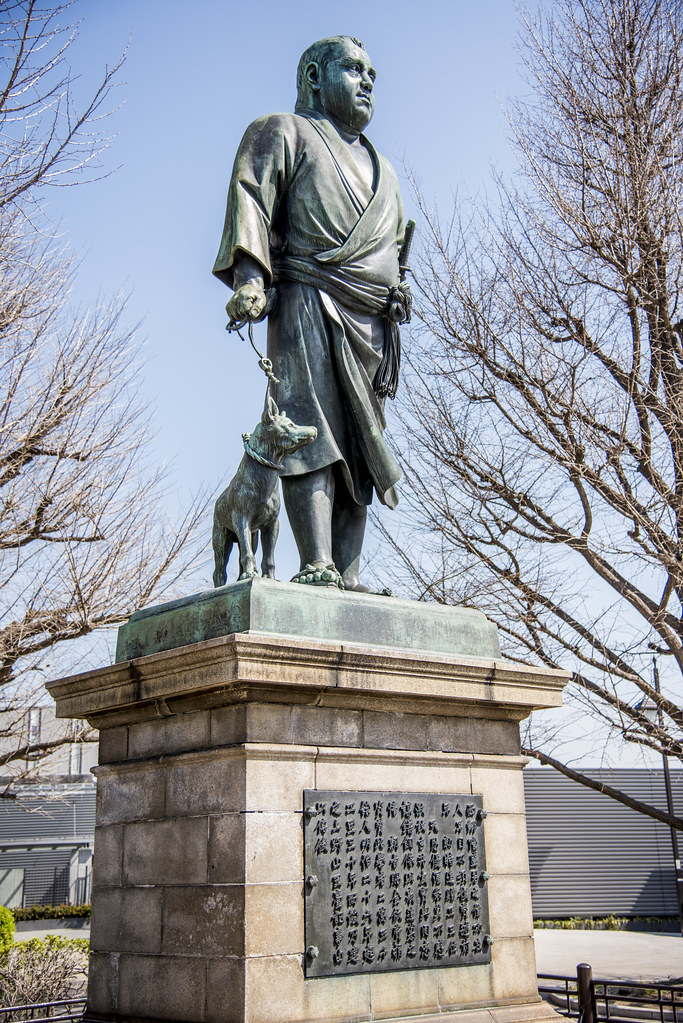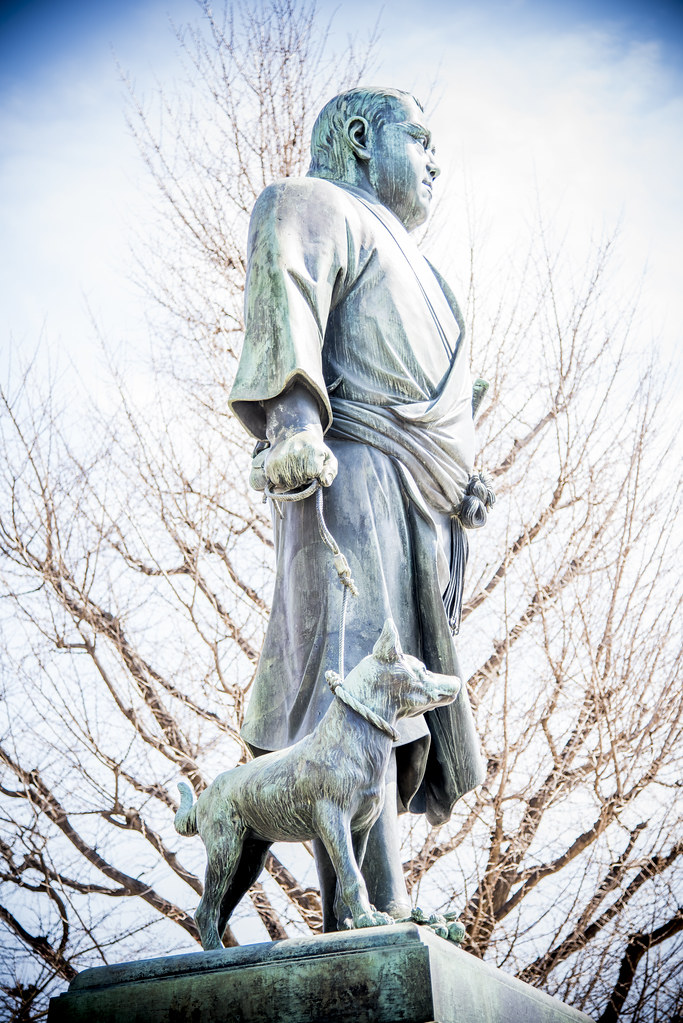
If one went to Ueno Station, one statue that you will find is of Saigo Takamori (Takanaga) and his dog.
Born as Saigo Kokichi (January 23, 1828-September 24, 1877), not only is Takamori one of the most influential samurai in Japanese history but he is also known as “The Last True Samurai”.

During the Meiji Restoration, when Shogun Tokugawa Yoshinobu resigned and returned power to the Emperor, Saigo was very vocal and opposed the negotiated resolution, in which he demanded that the Tokugawa should be stripped of their lands and special status. This would lead to the Boshin War (a civil war that took place from 1868-1869) in which the Tokugawa shogunate fought against those seeking to return to political power to the Imperial Court (one of the prominent leaders was Siago Takamori).
As a politician, Saigo also had a major hand in the abolition of the han system. he also disagreed with the modernization of Japan and opening commerce with the west. Opposing a railway network, feeling that money was best spent on military modernization.
His last final battle was the Satsuma Rebelliion, in which disaffected samurai revolted against the new imperial government. When samurai were left unemployed and their status became obsolete.
Saigo for the most part started to become concerned of growing political corruption and was also pushing for war against Korea, feeling the war would lead to a battle that samurai could find a meaningful and beneficial death. But when this plan was rejected, Saigo resigned from all his government positions in protest, along with other Statsuma ex-samurai who were in the military and police forces.
In 1874, Saigo established a private academy in Kagoshima which would provide students to take part in weapons training and instruction in tactics (132 branches were established all over the prefecture). He also started an artillery school and appointed disaffected samurai to political offices and this would dominate the Kagoshima government leading to Satsuma seceding from the central government by the end of 1876.
Tokyo was concerned about Saigo’s academies and the Meiji government sent a police officer Nakahara Hisao and 57 men to investigate on Saigo and his academies but these men were captured and tortured and confessed that they were spies sent to assassinate Saigo. While Nakahara repudiated the confession, in Satsuma, word spread of what the Meiji government were trying to do and the disaffected samurai now wanted to protect Saigo.
This would lead to the Satsuma Rebellion and a battle that would lead to Saigo’s defeat and literally the ending of the samurai class.
While the cause of Saigo Takamori’s death is unknown, what is known is that during the final battle, he was badly injured. Accounts from subordinates claim that he committed seppuku after his injury and his comrade Beppu Shinsuke to assist. Scholars refute that this happened and believed that since Takamori was in bad shape, his comrades severed his head and assisted in his warrior’s suicide. Believing that the reason his subordinates said he committed seppuku was to preserve his status as a samurai.
It may never be known of how Saigo Takamori died but on February 22, 1889, Emperor Meiji pardoned Saigo posthumously and he was labeled as a tragic hero.


In Ueno Park, a bronze statue featuring Saigo Takamori in hunting gear with his dog is often visited by many visitors. Created by Takamura Koun, it was unveiled to the public in December 1898.
One of the accounts of the unveiling came from British diplomat Ernest Satow, who met Saigo in the 1860s and writes abut the unveiling in “A Diplomat in Japan”.
A reproduction of the statue also exists in Okinoerabujima (one of the Statsunan Islands between Kyushu and Okinawa), where Saigo had been exiled long ago (in the early 1860s, the Tokugawa shogunate got rid of samurai who did not support its foreign trade policies. This would be known as the “Ansei Purge”).
But for those visiting Ueno (Uenoonshi) Park and see this statue, know that its of Saigo Takamori and his dog, but also a man know is known as “The Last Samurai”.
